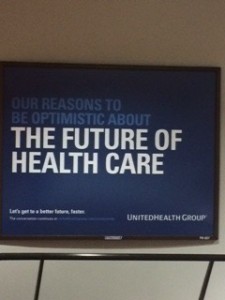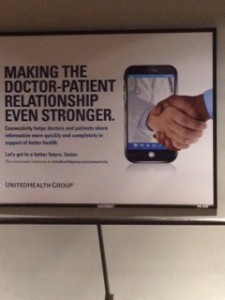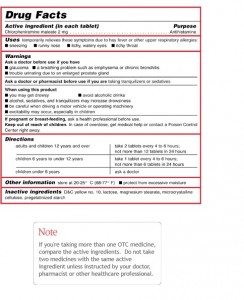 Living my mantra of Health is Everywhere, where we live, work, play, pray, and shop, I am always on the lookout for signs of health in my daily life. Today I’m in Washington, DC, speaking on a webinar led by the National Council on Patient Information and Education (NCPIE), discussing the findings in a survey of U.S. adults on self-care health care – my shorthand for healthcareDIY. And the hashtag for the webinar also speaks volumes: #OwnYourHealth.
Living my mantra of Health is Everywhere, where we live, work, play, pray, and shop, I am always on the lookout for signs of health in my daily life. Today I’m in Washington, DC, speaking on a webinar led by the National Council on Patient Information and Education (NCPIE), discussing the findings in a survey of U.S. adults on self-care health care – my shorthand for healthcareDIY. And the hashtag for the webinar also speaks volumes: #OwnYourHealth.
Here’s the link to the survey resources.
On my walk from Farragut North Metro station to a nearby office where the meeting will take place, I came upon this poster in the underground, sponsored by UnitedHealth Group, the health insurance company: “Our reasons to be optimistic about the future of health care.”
The results of NCPIE’s survey, indeed, give me reasons to be optimistic about the future of health care.
 Top-line, survey says, is that people want to be healthy and live lives with vitality and resilience. Nearly 9 in 10 people feel confident in their ability to take responsibility for their health, and most believe they are active in the self-care role. People also feel good about taking that control over their health.
Top-line, survey says, is that people want to be healthy and live lives with vitality and resilience. Nearly 9 in 10 people feel confident in their ability to take responsibility for their health, and most believe they are active in the self-care role. People also feel good about taking that control over their health.
Furthermore, 8 in 10 consumers say they’re expected to be active in managing their own health now — more than ever before.
Over one-half of consumers also want to live this DIY health-life sharing decisions with their doctors, found in the survey results. Connected to this is that a majority of people also take self-care beyond healthy eating/diet and exercise, to engaging in health “care” — getting check-ups, screenings, and preventive care.
So, yes, I’m optimistic about the future of health care….because I see a growing number of consumers — let’s call ourselves “health citizens” — who want more control over our health, and are accepting the responsibility to do so.
 Health Populi’s Hot Points: Consumers shift toward high-deductible health plans is motivating people to better understand their health care costs before they get the service, buy the product, and receive a bill or receipt. This transparency is still largely elusive in healthcare — at hospitals and doctors offices. But accessing health in retail health environments at the pharmacy, grocery or Big Box store allows people to get this kind of health-price transparency. Over-the-counter drugs, a cornerstone of self-care, come branded and store/private-labelled, allowing consumers to price and brand-compare at the point-of-purchase. Furthermore, the Drug Facts laberl is designed to be communicate clearly risks of products.
Health Populi’s Hot Points: Consumers shift toward high-deductible health plans is motivating people to better understand their health care costs before they get the service, buy the product, and receive a bill or receipt. This transparency is still largely elusive in healthcare — at hospitals and doctors offices. But accessing health in retail health environments at the pharmacy, grocery or Big Box store allows people to get this kind of health-price transparency. Over-the-counter drugs, a cornerstone of self-care, come branded and store/private-labelled, allowing consumers to price and brand-compare at the point-of-purchase. Furthermore, the Drug Facts laberl is designed to be communicate clearly risks of products.
 With the switch of branded prescription drugs to OTCs, for gut, allergy, eye care, and other conditions, consumers have save $millions taking advantage of these self-care products. We’ll expect to see the switch of other types of branded Rx’s in the coming years, which, when taken appropriately and by the right person at the right time, will give people greater convenience, access, and cost-savings when engaging in health/care.
With the switch of branded prescription drugs to OTCs, for gut, allergy, eye care, and other conditions, consumers have save $millions taking advantage of these self-care products. We’ll expect to see the switch of other types of branded Rx’s in the coming years, which, when taken appropriately and by the right person at the right time, will give people greater convenience, access, and cost-savings when engaging in health/care.




 Thank you FeedSpot for
Thank you FeedSpot for